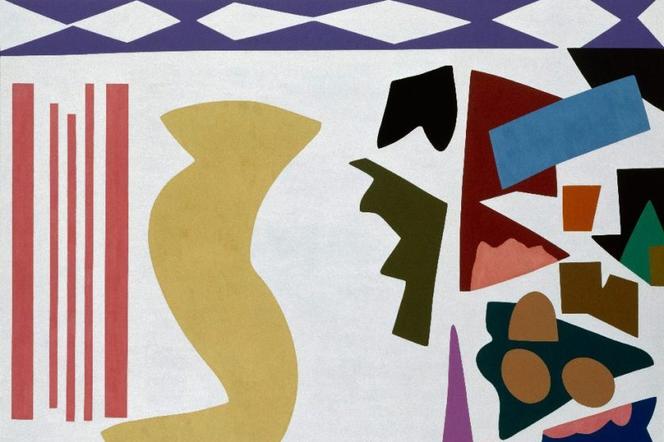
If we agree that what defines intelligence is (among other things) the ability to establish relationships between things that have none, then Shirley Jaffe's (1923-2016) art is fiendishly intelligent. She connects disparate shapes, unlikely colors, contradictory lines – like a puzzle or the early stages of a game of pick-up-sticks.
Except that, if you look very carefully, you understand that moving a single element would throw the whole composition off. The shapes dance, almost off balance, but they never fall; the paintings sing, always without harmony, verging even on chaos, but they always come together again, as if by a miracle. Every time, the painter offers a lesson in composition.
Some bring to mind Matisse's paper cutouts or Bram Van Velde's gouaches, others Kandinsky's later abstracts. But no one would have dared contrasting pastel colors with others that are so acidic that they can seem garish. However, it is probably because she actually prefered matte tones that Jaffe was actually able to "soften" them, whereas less sensitive artists would have tried to tame them, probably in vain.
Her use of white is another lesson for us, and not the least of her paradoxes. As artist Robert Kushner explains in a short book on Jaffe published in the collection "Transatlantique" (ER Publishing, 164 pages, 20 euros), "The color white lends itself to every role: background, shape, separation, connection. In the hands of a lesser artist, this white would have remained a passive background, but Jaffe insists it function as negative space and form – and as a color in its own right."
Abstract landscapes
The Centre Pompidou's beautiful retrospective of 168 works reveals all this, and much more. Having spent 30 years with Jaffe, Frédéric Paul, curator of the exhibition, knew her better than anyone – if it were possible to really know this tiny, discreet woman, who said little but whose remarks were always cutting.
She only left her small studio apartment on rue Saint-Victor, in Paris' 5th arrondissement, to have lunch (usually Chinese) or to see other people's exhibitions, which she did diligently and with a visual sharpness that left few unscathed.
Perhaps her archives, most of which are in the Kandinsky Library at the Centre Pompidou, will help to unravel the mystery, as the exhibition has begun to do. Nonetheless, if, as sociologist Pierre Francastel said, painting is an autonomous language which cannot be reduced to other languages, Jaffe's work is there to prove it.
Jaffe was born in 1923 in Elizabeth, New Jersey, studied art at Manhattan's legendary Cooper Union, and then came to Paris in 1949. She never left the city, except for a 1963-1964 stay in Berlin, which was a turning point in her work, according to Mr. Paul's analysis of her different periods.
You have 51.63% of this article left to read. The rest is for subscribers only.